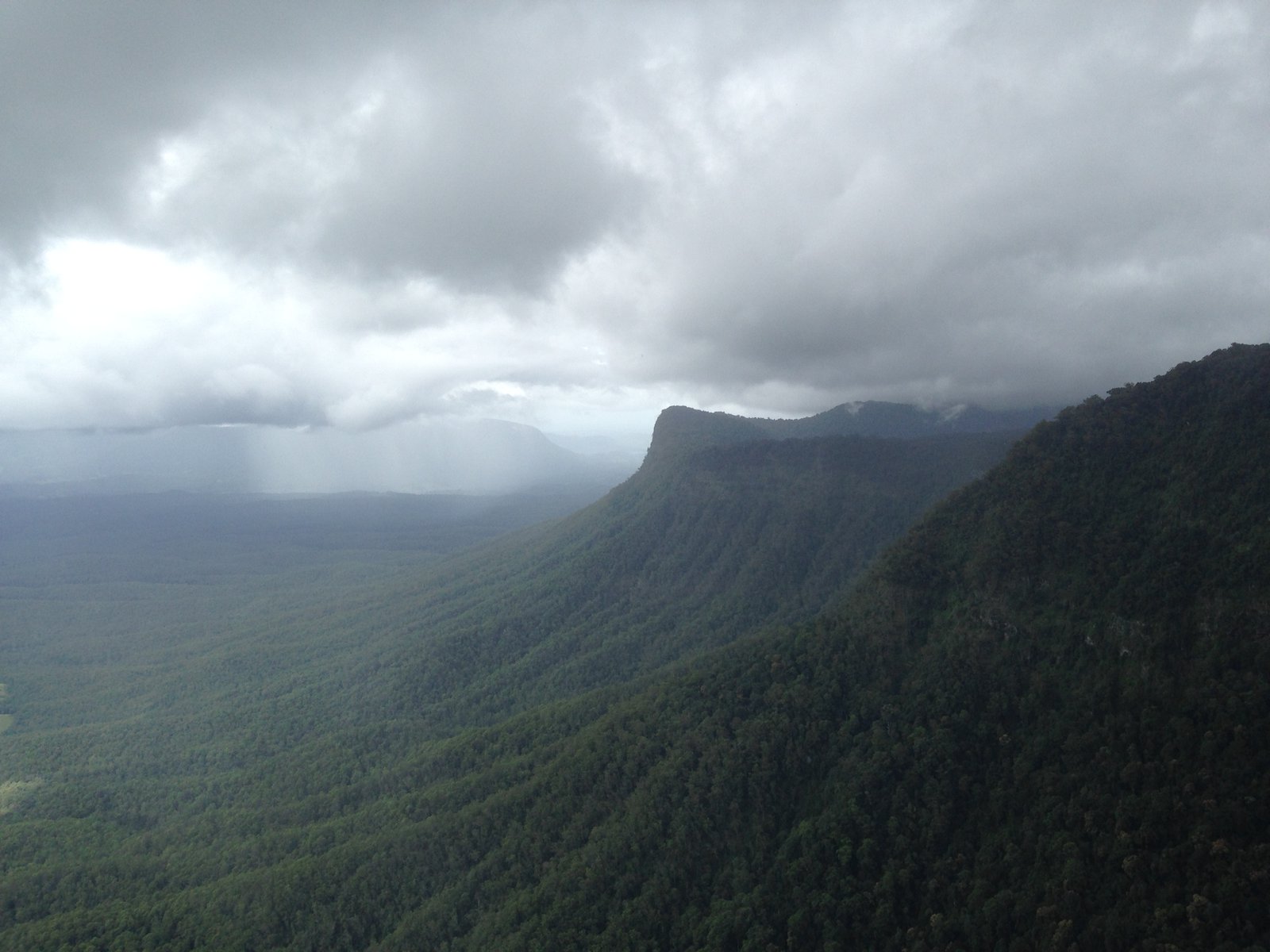The hunt for the not-so-elusive dung beetle
Last month, Dr Chris Reid and Aidan Runagall-McNaull arrived in Northeast NSW to determine the impacts of the 2019-20 bushfires on dung beetle populations (read the recent AM blog here). Now nearing the end of their fieldwork, there is some good news to report.
We are approaching the end of six weeks of fieldwork and it’s currently pouring outside. So, time to write up some notes and some observations on six wonderful weeks of 4WDriving around some of the most spectacular country Australia has to offer, in the hunt for the elusive dung beetle. To be honest, the dung beetles have not been elusive during our fieldwork – we have managed to find all of our target species.

Image of rainforests in Northeast NSW.
Image: Chris Reid© Chris Reid
To unwind a bit – we are part of a group of researchers examining the impact of last summer's bushfires on terrestrial invertebrates. This research group includes colleagues at the Australian Museum, and we are funded by the Federal Government via University of NSW. For the project, we overlaid the distribution of the 2019-20 bushfires and the distributions of beetles; from this, we came up with a list of species that, on paper at least, appeared to have had at least 50% of their known areas destroyed. These species were selected from groups that were (a) easily identified; (b) easily trapped; and therefore (c) had well-mapped distributions. Dung beetles are effectively 'it' on our formulated list – they also have a long adult season, include many flightless species and are attracted to baits, so that their absence is likely to be significant.
There are approximately 550 native species of dung beetle in Australia, including around 150 in NSW. The native dung beetles form two groups – about half are in a single genus, Onthophagus, most of whose species are found in relatively dry habitats, and the rest are in about 20 genera which occur in relatively wet forests. Many of the latter species are flightless and hence of concern when bushfires destroy the wet forests. Two species of Onthophagus and 12 species of 'other' are the ones we have been specifically chasing.

A 2000-year-old southern beech on the summit of the Border Ranges, home to Amphistomus cunninghamensis, one of our target species.
Image: Chris Reid© Chris Reid

A 2000-year-old southern beech on the summit of the Border Ranges, home to Amphistomus cunninghamensis, one of our target species.
Image: Chris Reid© Chris Reid
Therefore, we have been targeting wetter forests: areas with both burnt and unburnt similar forest types, where the target beetles are known to occur – yes, it is a bit complicated! From 436 baited traps at 109 sites, we have extracted about 8,000 dung beetles and we are fairly sure we have found all the target species. However, this will need to be confirmed with microscopy in the lab.
Given that there is a lot of checking and analysis yet to be done, we can’t confirm too much at present. Our impression is that at sites where we have a burnt/unburnt pairing, the burnt sites have fewer individuals of the target species but target species are not eliminated (except in severely burnt areas and most of the rainforests we have examined are only singed at the edges). This at least seems to be good news.
Meanwhile it’s raining. That’s what happens in rainforests and this morning on Mount Nardi we got soaked, picked up a lot of leeches and I just noticed one sucking on my leg. But it’s a small price to pay for being in such beautiful country.
Dr Chris Reid, Research Scientist, Entomology, Australian Museum Research Institute.
Aidan Runagall-McNaull, Technical Officer, Entomology, Australian Museum Research Institute.
Acknowledgements:
We are grateful to Symbio Zoo, Helensburgh, for the roopoo, the National Parks and Wildlife Service, NSW, for access to their estate, to our colleagues Professors Shawn Laffan and Gerry Cassis in University of New South Wales, for leading this project, and to the Federal Government for funding this project.











